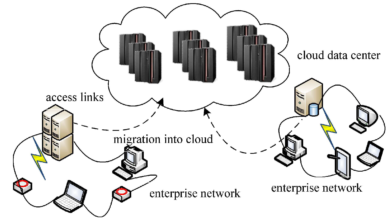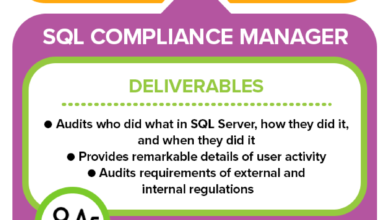Boosting Productivity with Data Servers
In today’s fast-paced digital era, businesses rely heavily on data servers to store and manage their valuable information. These powerful systems play a crucial role in ensuring smooth operations and boosting productivity. By harnessing the capabilities of data servers, organizations can streamline their processes, enhance collaboration, and drive innovation.
In this comprehensive guide, we will delve into the world of data servers and explore how they can significantly impact productivity in various industries. From improving data accessibility to optimizing performance, we will uncover the key benefits of utilizing data servers. So, whether you’re a small business owner or an IT professional, this article will provide you with the essential insights to leverage data servers effectively.
Understanding Data Servers
Data servers are the backbone of modern businesses, providing a centralized storage and management system for vast amounts of data. They consist of hardware components, including servers, storage devices, and networking equipment, as well as software that enables data retrieval, processing, and security.
Types of Data Servers
There are various types of data servers available to cater to different business needs. Some common types include:
- File servers: These servers store and manage files, allowing users to access and share data within a network.
- Database servers: These servers specialize in managing structured data, providing efficient storage and retrieval capabilities.
- Application servers: These servers host and manage applications, allowing users to access them remotely.
- Web servers: These servers handle website hosting and delivery, enabling users to access web pages.
Components of Data Servers
Data servers comprise several components that work together to ensure optimal performance and functionality:
- Server hardware: This includes the physical server units, processors, memory, and storage devices.
- Networking equipment: These components, such as routers and switches, enable data transfer between servers and clients.
- Operating systems: Data servers run on specialized operating systems designed for server environments, such as Linux or Windows Server.
- Database management software: For database servers, software like MySQL or Oracle is used to organize and retrieve structured data.
- Security software: Data servers employ various security measures, including firewalls, encryption, and access controls, to protect data from unauthorized access.
The Functionality of Data Servers
Data servers offer a range of functionalities that contribute to increased productivity:
- Data storage: Servers provide ample storage space to accommodate large volumes of data, ensuring it is readily accessible when needed.
- Data processing: Powerful processors and memory allow servers to handle complex computations and data manipulations efficiently.
- Networking capabilities: Servers facilitate seamless data transfer between clients, enabling collaboration and remote access.
- Data backup and recovery: Servers implement robust backup systems to ensure data integrity and enable quick recovery in the event of data loss or system failures.
- Centralized management: Data servers enable centralized control and administration of data, reducing redundancy and improving efficiency.
Enhancing Data Security
Data security is a top concern for businesses, and data servers play a crucial role in safeguarding sensitive information. By implementing robust security measures, data servers ensure that data remains confidential, protected from unauthorized access, breaches, and other threats.
Access Controls and Authentication
Data servers employ access controls and authentication mechanisms to ensure that only authorized individuals can access sensitive data. These measures may include password authentication, two-factor authentication, and role-based access controls.
Encryption
Encryption is a critical aspect of data security. Data servers use encryption algorithms to convert sensitive data into unreadable ciphertext, making it indecipherable to unauthorized users. This ensures that even if data is intercepted or stolen, it remains protected.
Firewalls and Intrusion Detection Systems
Data servers are equipped with firewalls and intrusion detection systems to monitor network traffic and detect potential threats. Firewalls act as a barrier between the server and the internet, filtering out malicious traffic, while intrusion detection systems analyze network activity for suspicious behavior.
Regular Security Audits and Updates
To maintain optimal security, data servers undergo regular security audits to identify vulnerabilities and implement necessary updates. Software patches and security fixes are applied promptly to address any potential weaknesses and ensure that the server remains protected against emerging threats.
Improving Data Accessibility
Access to data is crucial for employees to perform their tasks efficiently. Data servers play a vital role in improving data accessibility, ensuring that employees can retrieve the information they need when they need it, regardless of their location.
Centralized Data Storage
Data servers provide a centralized storage system where all relevant data is stored. This eliminates the need for employees to search for data across multiple devices or platforms, saving valuable time and effort.
Fast and Reliable Network Connections
Data servers are typically connected to high-speed networks, ensuring fast and reliable data transfer between the server and client devices. This enables employees to access data quickly, even when working remotely or accessing data-heavy applications.
Remote Access Capabilities
With the rise of remote work, data servers enable employees to access data and applications from anywhere with an internet connection. This flexibility empowers organizations to embrace remote work arrangements without compromising productivity.
Collaboration Tools and Features
Data servers often integrate collaboration tools and features that enable employees to work together seamlessly. These tools can include shared folders, document versioning, and real-time collaboration platforms, fostering teamwork and enhancing productivity.
Optimizing Performance and Speed
Slow and lagging systems can significantly hinder productivity. Data servers play a crucial role in optimizing performance and speed, enabling faster data processing, smoother operations, and an enhanced user experience.
High-performance Hardware
Data servers are equipped with high-performance hardware components, such as powerful processors and ample memory, to handle data-intensive tasks efficiently. This ensures smooth and fast data processing, reducing delays and improving overall system performance.
Data Caching
Data servers often employ caching mechanisms to store frequently accessed data closer to the client devices. This reduces the need to fetch data from the main storage every time, resulting in faster data retrieval and improved system responsiveness.
Load Balancing
Data servers distribute incoming requests across multiple servers, ensuring an even workload distribution and preventing any single server from becoming overwhelmed. This load balancing technique optimizes performance by utilizing server resources effectively.
Content Delivery Networks (CDNs)
Data servers can integrate with CDNs, which are distributed networks of servers located in various geographic locations. CDNs cache and deliver content to users from the server that is closest to them, reducing latency and improving the speed at which data is accessed.
Enabling Collaboration and Remote Access
In today’s interconnected world, collaboration and remote access have become essential for businesses. Data servers play a vital role in enabling seamless collaboration and remote access, allowing employees to work together efficiently regardless of their physical location.
Real-time Collaboration Tools
Data servers often integrate with real-time collaboration tools, such as project management platforms or video conferencing software. These tools facilitate communication, file sharing, and collaborative work, enabling teams to collaborate effectively, even when physically dispersed.
Virtual Private Networks (VPNs)
VPNs create secure connections between remote devices and the data server, allowing employees to access data and applications as if they were directly connected to the office network. This ensures data privacy and enables secure remote access to sensitive information.
Remote Desktop Services
Data servers can host remote desktop services, allowing employees to access their work desktop and applications from any device with an internet connection. This provides a consistent and familiar work environment, regardless of the physical location.
Shared Document Repositories
Data servers offer shared document repositories, where employees can store, access, and collaborate on documents in real-time. These repositories ensure that everyone has access to the latest version of a document, eliminating confusion and improving productivity.
Ngadsen test2
Scalability and Flexibility
As businesses grow, their data storage and processing requirements increase. Data servers offer scalability and flexibility, enabling organizations to expand their operations without compromising productivity.
Vertical Scaling
Data servers can scale vertically by upgrading hardware components, such as adding more powerful processors or increasing memory capacity. This allows businesses to handle larger workloads and accommodate growing data volumes without significant disruptions.
Horizontal Scaling
Data servers can also scale horizontally by adding more server units to the existing infrastructure. This distributes the workload across multiple servers, increasing processing power and enabling seamless expansion as the business grows.
Cloud Integration
Data servers can integrate with cloud services, allowing organizations to leverage the scalability andflexibility of cloud computing. By offloading some of the data storage and processing tasks to the cloud, businesses can easily scale their operations without the need to invest in additional hardware. Cloud integration also provides the advantage of on-demand resource allocation, ensuring that businesses only pay for the resources they need at any given time.
Virtualization
Data servers often utilize virtualization technology, which allows multiple virtual machines to run on a single physical server. This enables efficient resource utilization and flexibility in allocating server resources to different applications or departments based on their specific needs. Virtualization also simplifies server management, making it easier to scale up or down as required.
Modular Infrastructure
Data servers with modular infrastructure offer the flexibility to add or remove components as needed. This modular design allows businesses to adapt their server environment to changing requirements without disrupting the entire system. It also simplifies maintenance and upgrades, reducing downtime and improving overall productivity.
Reducing Downtime and Mitigating Risks
Downtime can have severe consequences on productivity and revenue. Data servers help minimize downtime through redundancy, backup systems, and disaster recovery plans, ensuring business continuity even in the face of unexpected events.
Redundant Hardware and Failover Systems
Data servers often employ redundant hardware components, such as redundant power supplies and hard drives, to minimize the risk of hardware failures. Additionally, failover systems are implemented to automatically switch to backup servers in the event of a primary server failure, ensuring continuous operation with minimal disruption.
Backup and Restore Mechanisms
Data servers implement robust backup and restore mechanisms to protect against data loss. Regular backups are performed to create copies of the data, which can be restored in case of accidental deletion, corruption, or other data-related incidents. These backups are often stored on different physical devices or in off-site locations for added security.
Disaster Recovery Planning
Data servers are an integral part of disaster recovery plans, which outline the steps and procedures to follow in the event of a catastrophic event. These plans include strategies for data restoration, system recovery, and ensuring business continuity. By having a well-defined disaster recovery plan in place, organizations can minimize downtime and quickly resume operations.
Monitoring and Alert Systems
Data servers are equipped with monitoring and alert systems that continuously monitor server performance, hardware health, and potential issues. These systems generate alerts or notifications to IT administrators, allowing them to proactively address any potential problems before they escalate into major disruptions.
Streamlining Data Management
Data servers simplify data management processes, allowing organizations to efficiently organize, store, and retrieve vast amounts of information. By implementing effective data management strategies, businesses can improve productivity and optimize resource utilization.
Data Organization and Structuring
Data servers provide tools and features that enable organizations to organize and structure their data effectively. This includes creating logical data models, defining data hierarchies, and implementing standardized naming conventions. Well-organized data ensures easy retrieval and reduces the time spent searching for specific information.
Data Indexing and Search Capabilities
Data servers often incorporate indexing and search capabilities, allowing users to quickly locate specific data within large datasets. These features utilize indexing algorithms to create searchable indexes, enabling users to find relevant information based on keywords or specific criteria.
Data Compression and Deduplication
Data servers employ compression and deduplication techniques to optimize storage space. Compression algorithms reduce the size of data files, allowing more data to be stored within limited storage capacities. Deduplication eliminates redundant data by identifying and removing duplicate files or blocks, further optimizing storage utilization.
Data Lifecycle Management
Data servers enable organizations to implement data lifecycle management strategies, which define how data is managed throughout its lifecycle, from creation to deletion. This includes defining retention policies, archiving data, and securely disposing of data when it is no longer needed. Effective data lifecycle management improves efficiency and ensures compliance with data protection regulations.
Enhancing Analytics and Insights
Data servers provide a robust foundation for powerful analytics and insights. By leveraging the capabilities of data servers, organizations can extract valuable information from their data, make data-driven decisions, and gain a competitive edge in their industry.
Data Warehousing and Data Lakes
Data servers often act as repositories for data warehouses or data lakes, where large volumes of structured and unstructured data are stored for analysis. These centralized data repositories enable organizations to consolidate and integrate data from various sources, providing a comprehensive view for analytics.
Data Processing and Analytics Tools
Data servers integrate with data processing and analytics tools, such as SQL databases, Hadoop, or Apache Spark. These tools offer powerful data processing capabilities, allowing organizations to perform complex queries, generate reports, and gain insights from their data.
Business Intelligence and Visualization
Data servers support business intelligence and visualization tools that transform raw data into meaningful visual representations, such as charts, graphs, and dashboards. These visualizations enable users to easily interpret data, identify patterns, and make informed decisions based on the insights gained.
Machine Learning and Predictive Analytics
Data servers can facilitate machine learning and predictive analytics by providing the necessary infrastructure and computational power. Machine learning algorithms can be deployed on data servers to analyze patterns, make predictions, and automate decision-making processes based on historical data.
Future Trends and Innovations
The world of data servers is continuously evolving, with emerging trends and innovations that are shaping the future of data management and productivity. These advancements hold the potential to further enhance the capabilities of data servers and drive productivity to new heights.
Edge Computing and Edge Servers
Edge computing brings data processing closer to the source of data generation, reducing latency and improving real-time decision-making. Edge servers, which are located closer to the devices or sensors generating data, enable faster data processing and analysis, enhancing productivity in industries such as IoT, autonomous vehicles, and healthcare.
Artificial Intelligence in Data Servers
Data servers are starting to incorporate artificial intelligence (AI) capabilities, enabling them to automate tasks, optimize resource allocation, and proactively detect and mitigate potential issues. AI-powered data servers can analyze data patterns, predict system failures, and optimize performance, ultimately improving productivity and efficiency.
Blockchain and Data Security
Blockchain technology is being explored for enhancing data security in data servers. By utilizing distributed ledger technology, data servers can ensure data integrity, immutability, and transparency, reducing the risk of unauthorized data tampering and improving overall data security.
Smart Data Management and Automation
Smart data management solutions are being developed to automate data management processes, including data classification, data governance, and data lifecycle management. These solutions leverage AI and machine learning to streamline data management tasks, improving efficiency and productivity.
In conclusion, data servers play a vital role in boosting productivity across various industries. By understanding their capabilities and leveraging their features, organizations can enhance data security, improve accessibility, optimize performance, streamline data management processes, and gain valuable insights. As technology continues to advance, data servers will continue to evolve, enabling organizations to achieve higher levels of productivity and efficiency.
Whether you’re a small business looking to streamline operations or a large enterprise aiming for digital transformation, investing in data servers is a strategic move that can significantly impact your productivity and overall success.



